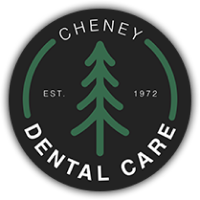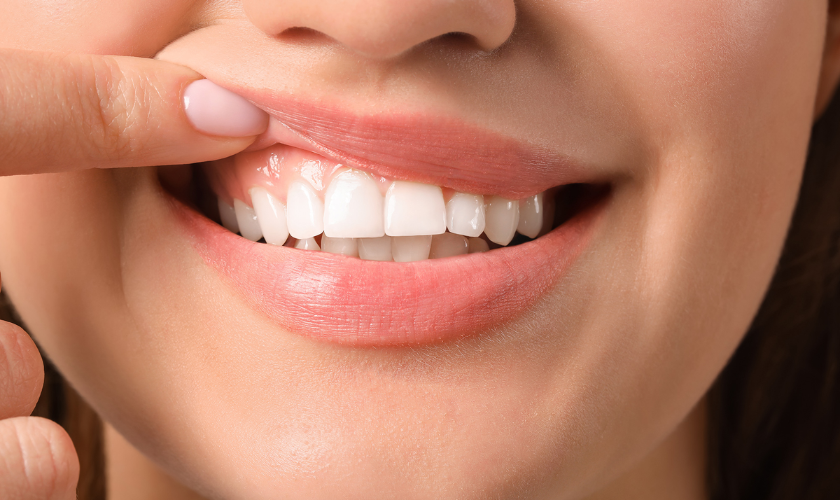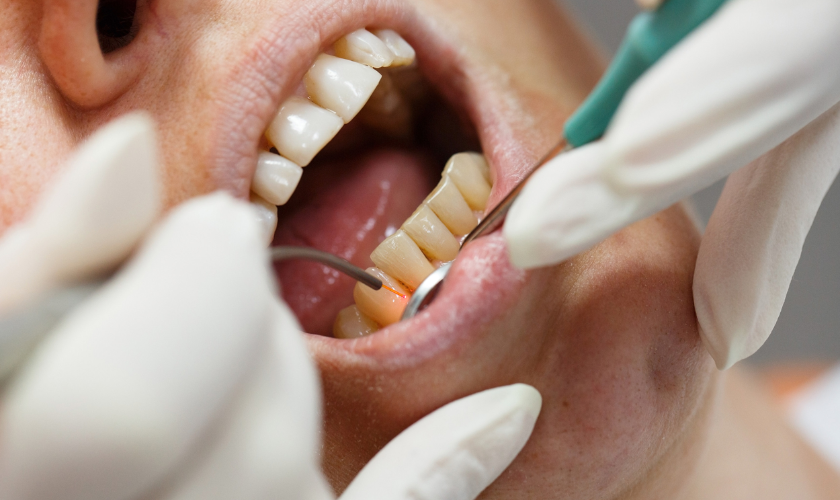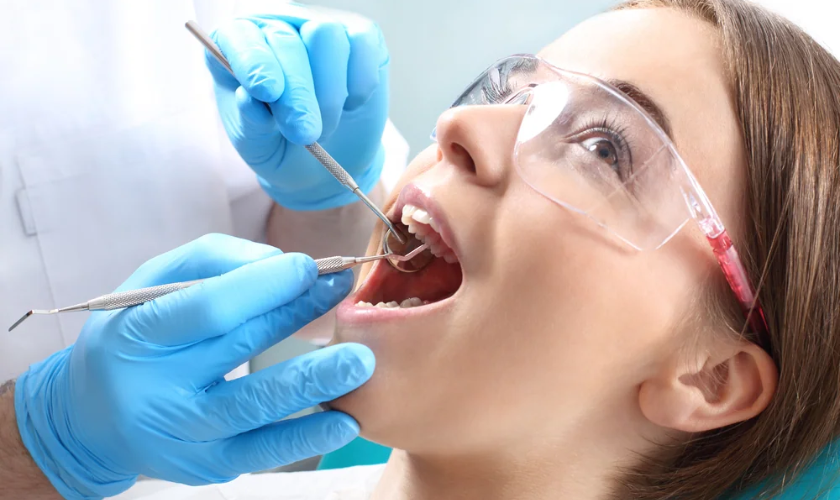Top 5 Signs You Need Periodontal Therapy And How It Can Help

Periodontal therapy is crucial for maintaining gum health and overall oral wellness. In order to stop more damage from occurring, professional intervention is required when gum disease has advanced past its initial stages. Understanding the signs that indicate you need periodontal therapy can help you seek treatment promptly and protect your smile.
Signs Tell You Need Periodontal Therapy – Don’t Ignore These Red Flags!
Here’s a closer look at the top 5 signs that you might need periodontal therapy and how this procedure can improve the health of your mouth.
1. Persistent Gum Bleeding
- What It Means: If you notice that your gums bleed while brushing, flossing, or even spontaneously, it’s a strong indicator of gum disease. Gum bleeding may indicate a more severe case of periodontal disease or be an early indicator of gingivitis.
- Why It Happens: Gum bleeding typically results from inflammation and infection in the gums, often caused by plaque buildup. Plaque bacteria release toxins that irritate the gum tissue, leading to bleeding.
- How Periodontal Therapy Can Help: Periodontal therapy targets the underlying causes of gum inflammation. Professional cleanings eliminate tartar and plaque accumulation, lowering inflammation and bleeding.
Advanced therapies, such as scaling and root planing, help to clean the deeper layers of the gums and teeth roots to prevent further bleeding and promote gum healing.
2. Persistent Bad Breath
- What It Means: Chronic bad breath or halitosis, often indicates that bacteria are thriving in the mouth due to gum disease. The odor can be a sign that periodontal issues are not being managed effectively.
- Why It Happens: Bacteria that accumulate along the gum line produce sulfur compounds, leading to unpleasant breath. As gum disease progresses, the bacteria can lead to deeper infections and worsening breath.
- How Periodontal Therapy Can Help: Periodontal therapy involves deep cleaning techniques that address the source of bad breath. By eliminating plaque, tartar, and bacteria, the therapy improves overall oral hygiene and freshens breath. Regular periodontal maintenance helps to keep bacteria at bay and prevents recurring bad breath.
3. Receding Gums
- What It Means: Gum recession is characterized by the gradual pulling away of gum tissue from the teeth, exposing more of the tooth or its root. This condition can lead to sensitivity and an increased risk of decay.
- Why It Happens: Gum recession can occur due to chronic inflammation and infection from periodontal disease. As the gums pull away from the teeth, pockets form where bacteria can accumulate, exacerbating the issue.
- How Periodontal Therapy Can Help: It addresses gum recession by treating the infection and inflammation that caused it. Treatments such as scaling and root planing eliminate microorganisms and polish the tooth roots to encourage gum regrowth. In severe cases, regenerative procedures may be used to restore lost gum tissue and bone.
4. Loose or Shifting Teeth
- What It Means: If your teeth feel loose or begin to shift from their original positions, it’s a serious sign that you may need periodontal therapy. This condition often results from advanced periodontal disease that affects the bone and supporting structures of the teeth.
- Why It Happens: Periodontal disease can lead to bone loss around the teeth, weakening their support and causing them to loosen. The loss of bone and connective tissue can result in teeth shifting or becoming unstable.
- How Periodontal Therapy Can Help: Periodontal therapy aims to stabilize and restore the health of the supporting structures of the teeth. Treatments may include procedures to regenerate lost bone and tissue, as well as techniques to stabilize loose teeth. Addressing the underlying disease helps prevent further tooth mobility and shifting.
5. Gum Swelling and Tenderness
- What It Means: Swollen, red, and tender gums are common symptoms of gum disease. If your gums are frequently inflamed or sensitive, it’s an indication that periodontal therapy may be needed.
- Why It Happens: Inflammation and tenderness occur due to the body’s response to bacterial infection in the gums. As the infection progresses, it causes the gum tissue to become swollen and painful.
- How Periodontal Therapy Can Help: Periodontal therapy targets the inflammation and infection causing gum swelling. Professional cleanings remove irritants and bacteria, while therapeutic treatments help to reduce inflammation and soothe the gum tissue.
Recognizing the signs that you need periodontal therapy is essential for keeping gum health at its best and preventing the progression of gum disease. Persistent gum bleeding, bad breath, receding gums, loose or shifting teeth, and gum swelling are all indicators that professional intervention may be necessary.
It offers a range of benefits, from reducing inflammation and bleeding to stabilizing loose teeth and improving overall oral hygiene. If you experience any of these symptoms, it’s essential to consult with a dental professional to evaluate your condition and determine the appropriate treatment.
Timely periodontal therapy not only addresses current issues but also helps to prevent future complications, ensuring a healthier and more confident smile. Regular dental check-ups and maintaining good oral hygiene practices are key to sustaining the results of periodontal therapy and preserving your dental health for a long time.




